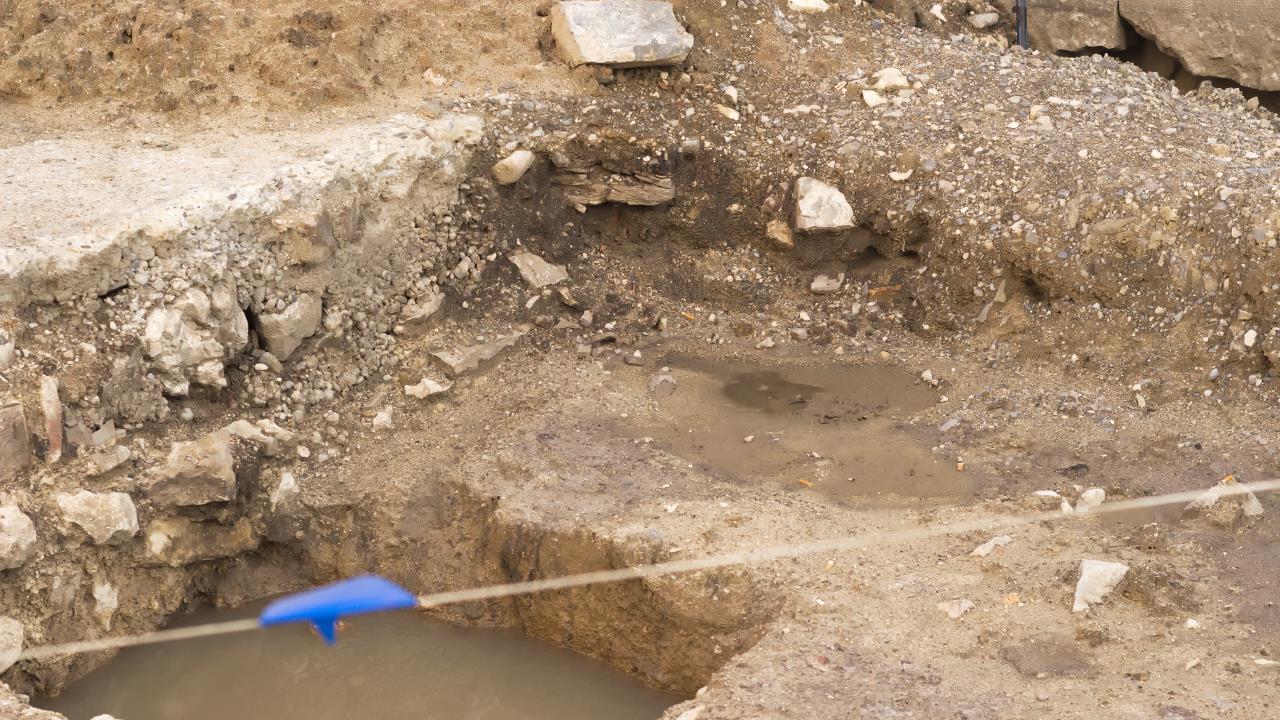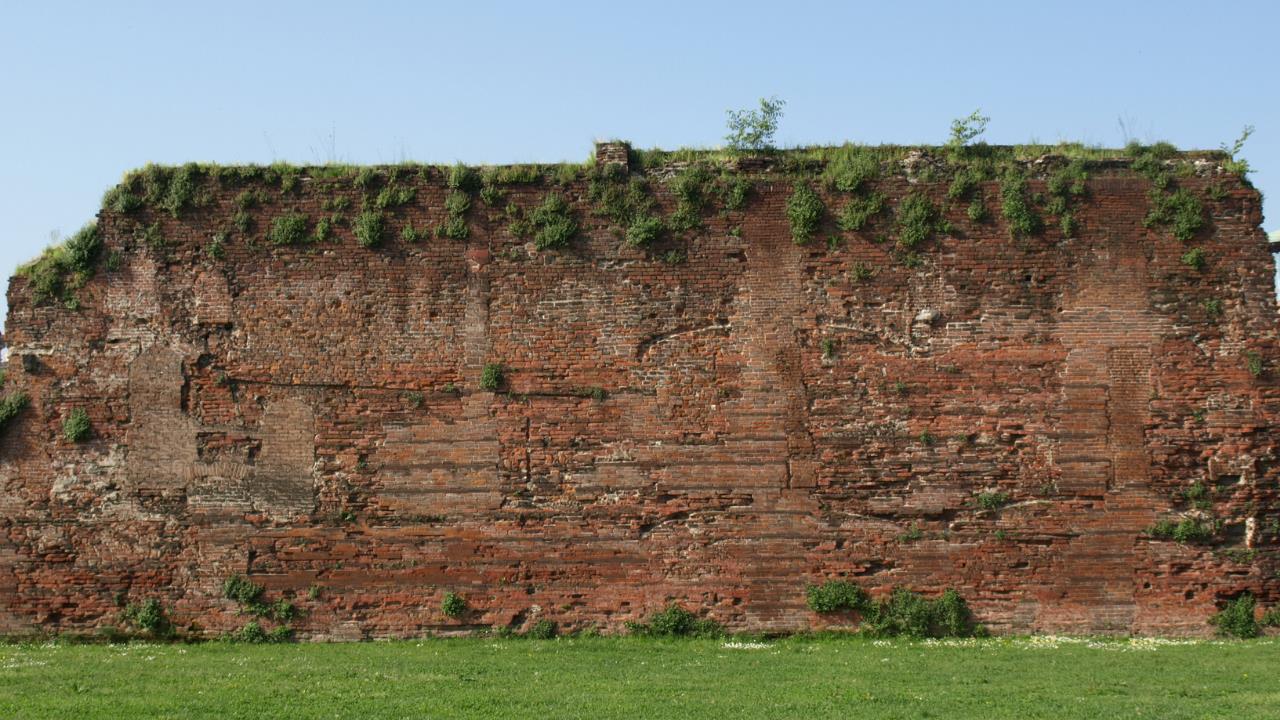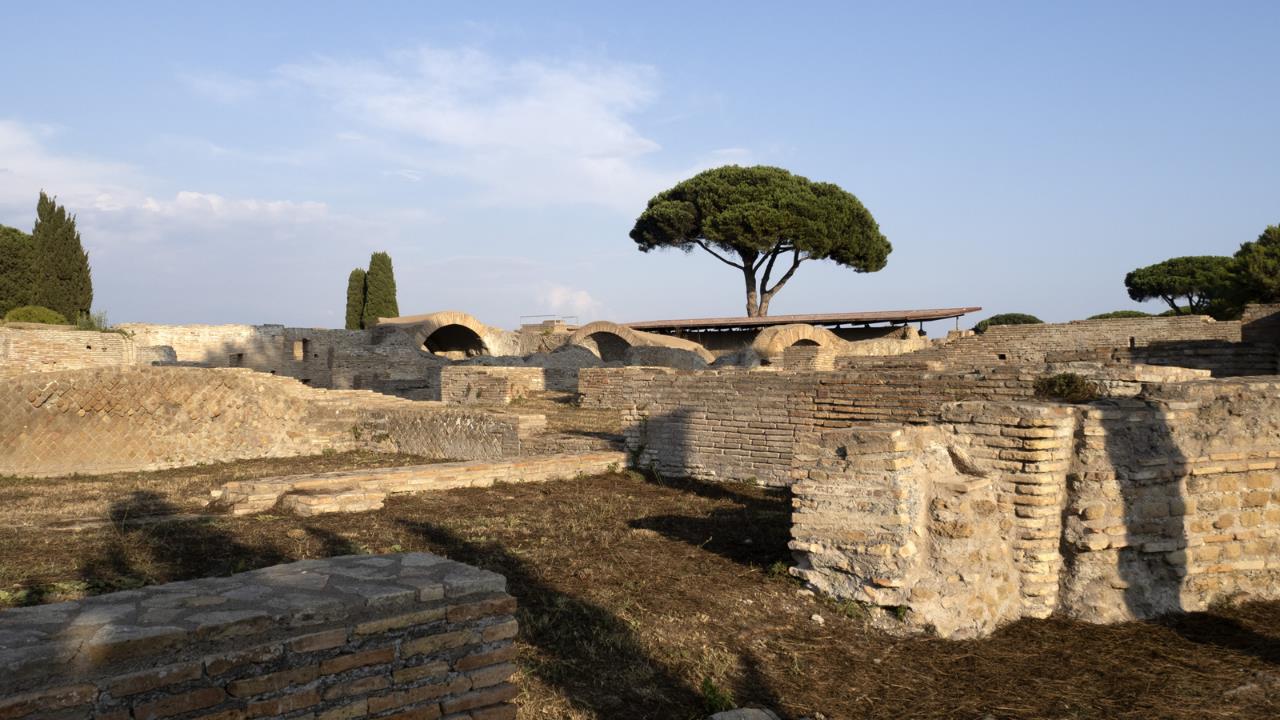
Unearthing Wonder: Top 10 Ancient Archeological Sites Calling Your Name
You're about to embark on a thrilling journey through time, where you'll uncover the world's most awe-inspiring archeological sites.
From the enigmatic Stonehenge to the grandeur of the Roman Colosseum, you'll delve into the secrets of ancient civilizations.
You'll discover myths, marvel at feats of engineering, and immerse yourself in rich histories that have shaped our world.
So, strap on your explorer's hat, it's time to unearth the wonders that are calling your name.
Key Takeaways
- The Great Pyramid of Giza is an architectural marvel standing for over four millennia and is the last of the Seven Wonders of the Ancient World.
- Stonehenge is an enigmatic stone circle in England, possibly a burial ground or observatory, built with remarkable knowledge of mathematics and geometry.
- Incan architectural genius is showcased in structures like Machu Picchu, with intriguing features and a testament to their sophistication and ingenuity.
- Ancient cities and civilizations like Petra and Angkor Wat offer insights into ancient religious practices and are gateways to understanding our shared past.
The Awe-Inspiring Great Pyramid of Giza
You'll be captivated by the Great Pyramid of Giza, an architectural marvel that's stood as a testament to Egypt's ancient civilization for over four millennia.
This last of the Seven Wonders of the Ancient World offers a glimpse into the past that's second to none.

Built as a tomb for Pharaoh Khufu around 2600 BC, it's a feat of engineering that's still unmatched today.
You'll be amazed by the precision of its construction; the blocks, averaging 2.5 tons each, are aligned with an accuracy that modern technology struggles to replicate.
Furthermore, its alignment towards true north is off by only 3/60th of a degree, an astounding accomplishment without compasses or modern tools.
Your understanding of ancient cultures will deepen as you explore this timeless testament to human ingenuity.
Journey Through the Mysterious Stonehenge
Where else can you step into the heart of prehistoric mystery than at Stonehenge? Located in England's Wiltshire county, this enigmatic stone circle captivates your imagination. You're thrust into a world of ancient ceremonies, celestial observations, and enduring enigmas.
Archaeologists believe it was built between 3000 and 2000 BC. Yet, it's still not clear why. Some suggest it's an ancient burial ground, while others believe it's a celestial observatory. Despite the mystery, it's undeniable that its builders possessed remarkable knowledge of mathematics and geometry. They aligned the stones with specific solar and lunar events.
As you wander around the giant stones, you're not just touring an archaeological site; you're journeying through millennia of human history.

Unlocking the Secrets of Machu Picchu
Imagine yourself standing amidst the misty peaks of the Andes. You're about to explore the brilliance of Incan architectural ingenuity, as well as unlock hidden narratives etched into centuries-old stone.
It's an intriguing journey through time that will leave you marvelling at the advanced civilization that once thrived here.
Machu Picchu's Hidden Mysteries
In your quest for ancient secrets, don't overlook Machu Picchu, where thousands of hidden mysteries are yet to be revealed. This historical landscape is a treasure trove of unanswered questions, veiled narratives and compelling enigmas. You'll find yourself intrigued by:
- The Intihuatana Stone: A precise astrological clock or a sacred shrine?
- The Temple of the Sun: How did the Incas construct such a perfect circular building without modern tools?
- The mysterious ‘doorway to nowhere': An unfinished project or a symbolic gateway?
Each of these puzzles is a testament to the Incas' ingenuity and sophistication, sparking endless fascination and speculation.
Now, as we transition into exploring Incan architectural genius, you're about to uncover even more of Machu Picchu's captivating allure.
Exploring Incan Architectural Genius
While you're marveling at the vast splendor of Machu Picchu, you'll begin to notice the Incan architectural genius that's evident in every nook and cranny of this ancient citadel. The Incan builders' knack for stone masonry is unparalleled. They've developed a technique, called ashlar, which involves precisely cutting blocks of stone to fit them together tightly without mortar.
You'll be amazed how these structures have withstood earthquakes due to this intricate stonework. Look closely, and you'll see the trapezoidal doors, windows, and niches, a distinct Incan architectural feature designed for stability.

The Incas' understanding of their environment also shines through in their strategic site placement, taking advantage of natural defenses and solar patterns. It's truly an architectural marvel!
Grandeur of the Roman Colosseum
You'll be astounded by the sheer size and grandeur of the Roman Colosseum, one of the world's most iconic ancient sites. Built nearly 2,000 years ago, it's a testament to the engineering prowess of the ancient Romans, who constructed this enormous amphitheater without the benefit of modern machinery.
As you explore, you'll notice:
- The intricate network of underground passages, once bustling with gladiators and wild animals.
- The innovative design of the seating area, thoughtfully divided by social rank.
- The impressive use of concrete, a Roman invention, which has ensured its survival.
It's a humbling reminder of ancient times, showcasing the Romans' flair for combining functionality with aesthetics. The Colosseum isn't just a structure; it's a symbol of Rome's enduring legacy.
The Lost City of Petra Revealed
As you set your sights on the lost city of Petra, you're stepping into a world steeped in historical significance. With each footfall among the ruins, you're tracing the steps of ancient Nabatean traders who once thrived in this enigmatic city.
The exploration of Petra offers a chance to unravel its mysteries, revealing not just stone-carved edifices but a rich tapestry of human history.
Petra's Historical Significance
Why haven't you discovered the historical significance of Petra, the so-called Lost City that's brimming with ancient secrets? This UNESCO World Heritage site in Jordan was once a thriving Nabatean city, dating back to 300 B.C.

It's more than just a traveler's paradise - it's a time capsule of history waiting to be explored.
Petra's historical significance, you ask? It's manifold:
- It was a crucial crossroads of ancient civilizations, connecting the silk and spice trade routes.
- Its intricate architecture, carved directly into vibrant red sandstone cliffs, demonstrates the advanced engineering of the Nabateans.
- Petra also provides rich insights into ancient religious practices, particularly the worship of Dushara and Al-Uzza.
You see, Petra isn't just a Lost City - it's a gateway into understanding our shared past.
Exploring Petra's Ruins
Now, let's dive deeper into Petra's ruins, a treasure trove of history that's waiting for your exploration.
You'll marvel at the city's intricate architecture carved into the rose-red cliffs. The Al Khazneh, or 'The Treasury', is the most iconic structure, believed to be the mausoleum of a Nabatean king.
You'll also find the Monastery, another architectural marvel, lying atop a flight of 800 steps.
Don't miss the Street of Facades, lined with impressive tombs, and the Great Temple, reflecting the grandeur of the ancient city.

You'll be awe-struck by the advanced water conduit system, an example of the Nabateans' genius.
Exploring Petra's ruins isn't just about seeing ruins, it's a journey into a world that's been lost in time, offering a unique insight into a forgotten civilization.
Majestic Splendor of Angkor Wat
You'll find few places on earth that embody ancient grandeur quite like Angkor Wat, a sprawling sacred complex hailed as one of the most remarkable archaeological sites ever discovered. Built in the 12th century, this Cambodian masterpiece stands as an enduring testament to the former Khmer Empire's architectural prowess and spiritual devotion.
Its beauty lies in its complexity. Notably, the intricate bas-reliefs depicting Hindu mythology and historical events showcase the Khmers' excellent craftsmanship. Additionally, the temple's unique westward orientation breaks from traditional Angkorian architecture and sparks intriguing theories. Furthermore, the delicate balance between preservation and nature can be seen in the gnarled tree roots enveloping parts of the site.
As you explore Angkor Wat, you'll feel an overwhelming sense of awe, a testament to its timeless allure and cultural significance.
Exploring Mayan Heritage in Chichen Itza
While Angkor Wat leaves you spellbound with its architectural grandeur, it's Chichen Itza's Mayan heritage that'll truly captivate your historical curiosity.
Nestled deep in Mexico's Yucatan Peninsula, this ancient city is a testament to the Mayans' astronomical prowess and architectural ingenuity. The El Castillo pyramid, with its 365 steps, mirrors the solar year, a reflection of the Mayans' precise understanding of celestial mechanics.

The Temple of the Warriors, adorned with intricate carvings, speaks volumes about their martial culture. The Great Ballcourt, the largest of its kind, offers insights into their unique sports. Each stone in Chichen Itza whispers tales of a civilization that thrived centuries ago.
As you unravel its secrets, you're bound to be left in awe. But the journey doesn't end here; next, prepare to marvel at the terracotta army.
Marveling at the Terracotta Army
From the steps of Chichen Itza, let's journey to the historical marvel in China's Shaanxi province, where you'd be awestruck by the sheer magnitude and detail of the Terracotta Army. Unearthed in 1974, this site has become a testament to the grandeur of the Qin dynasty and the afterlife beliefs of ancient China.
The thousands of life-sized clay soldiers are unique, intricately carved with individual facial expressions, hairstyles, and uniforms. The army includes not just soldiers, but also horses, chariots, and even non-military figures like acrobats and musicians.
The excavation is ongoing, revealing new facets of this ancient civilization regularly.
Gazing upon this silent army, you'll feel the weight of centuries past and marvel at the skill and dedication of the ancient artisans.
Immersed in History at Acropolis of Athens
Stepping into the Acropolis of Athens, you're instantly immersed in the rich history of ancient Greece. This iconic hilltop citadel, crowned by the magnificent Parthenon, arguably epitomizes the grandeur of classical civilization. As you tread the worn marble paths, you're retracing the steps of renowned philosophers, statesmen, and playwrights that once roamed these grounds.

Surveying the Doric columns of the Parthenon, you marvel at the architectural expertise of the 5th-century B.C. Athenians. The Erechtheion, with its famous Porch of the Caryatids, speaks volumes of ancient religious practices. Every stone, every monument, has a story to tell, and you're there to listen.
The Acropolis isn't just a site to visit; it's a journey back in time, a profound connection with human heritage.
The Mesmerizing Ajanta Caves Unveiled
Swapping the classical grandeur of Athens for the mysterious allure of India, you'll find yourself enthralled by the Ajanta Caves, a mesmerizing testament to ancient Buddhist civilization. Nestled in the rocky terrain of Maharashtra, these caves house an array of ornate murals and sculptures, illustrating Buddha's teachings and Jataka tales.
Here's what makes Ajanta Caves intriguing:
- The murals: They're not just colorful pictures, but a sophisticated visual language, meant to direct the viewer towards spiritual enlightenment.
- The architecture: The caves are carved into a horseshoe-shaped cliff. This style isn't accidental- it's a reflection of the Buddhist concept of the universe.
- The historical context: They were created between 2nd century BC and 6th century AD, a period marked by significant developments in Buddhist philosophy.
As you explore, you'll appreciate the artistic and intellectual prowess that defines this ancient site.
Conclusion
So, there you have it - ten awe-inspiring ancient sites that are just begging to be explored.
Each one, a testament to the ingenuity and creativity of our ancestors. They beckon you to dig deeper into humanity's past, to marvel at the grandeur, and to unlock mysteries still hidden.

Don't just read about them, make sure they're on your travel bucket list. After all, there's no better way to appreciate history than to walk through it.
 Backyard GrillingWeekend WarriorsAdvice from DadBeard GroomingTV Shows for Guys4x4 Off-Road CarsMens FashionSports NewsAncient Archeology World NewsPrivacy PolicyTerms And Conditions
Backyard GrillingWeekend WarriorsAdvice from DadBeard GroomingTV Shows for Guys4x4 Off-Road CarsMens FashionSports NewsAncient Archeology World NewsPrivacy PolicyTerms And Conditions
